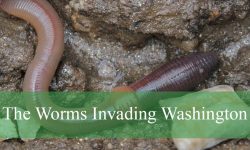In the springtime air of North Carolina, few sights are as common—or as misunderstood—as the buzzing of carpenter bees. These large, shiny black-and-yellow insects hover around wooden porches, decks, and eaves, often causing homeowners to worry about damage and potential stings.
But are these bees really dangerous? Do they pose a threat to your home’s structure, or are they simply misunderstood pollinators doing their part in nature?
In this comprehensive guide, we’ll uncover the truth about carpenter bees in North Carolina—their habits, nesting behavior, the risks they pose to wooden homes, and how to manage them safely. You’ll learn why they’re both a nuisance and a vital part of the ecosystem, and how North Carolinians can protect their property without harming these beneficial bees.
Understanding Carpenter Bees

What Are Carpenter Bees?
Carpenter bees (Xylocopa virginica and related species) are large, solitary bees named for their habit of boring into wood to build nests. They are often mistaken for bumblebees but can be distinguished by their shiny black abdomens, whereas bumblebees have fuzzy, yellow-striped bodies.
These bees are native to North America and thrive in North Carolina’s warm, humid climate. They are especially active from March through June, when they search for mates and nesting sites.
Why They Bore Into Wood
Carpenter bees don’t eat wood like termites. Instead, females excavate tunnels in untreated, unpainted, or weathered wood to lay their eggs. They prefer softer woods such as pine, cedar, and cypress—common materials in North Carolina homes, decks, and fences.
Each tunnel, called a gallery, can stretch up to 12 inches long and is used year after year. Over time, multiple generations may expand the tunnels, causing structural concerns if left unchecked.
Carpenter Bees vs. Bumblebees
Though they look similar, these two species behave very differently:
- Carpenter bees are solitary and nest in wood.
- Bumblebees live in colonies underground.
- Carpenter bees rarely sting, while bumblebees can sting multiple times if provoked.
Understanding this distinction is crucial for proper management.
Carpenter Bees in North Carolina: The Ideal Habitat
Climate and Distribution
North Carolina’s mild winters and long springs create perfect conditions for carpenter bees. They can be found from the Blue Ridge Mountains to the coastal plains, especially around wooden structures.
They thrive in rural and suburban settings, where porches, barns, and outdoor furniture provide abundant nesting opportunities. Homeowners in Charlotte, Raleigh, Asheville, and Wilmington often report sightings as temperatures rise in early spring.
Seasonal Activity
- Early Spring (March–April): Males emerge and hover aggressively to defend territories. Females begin boring new nests.
- Late Spring (May–June): Egg-laying and nesting activity peak.
- Summer (July–August): Adults die off, leaving larvae to develop into the next generation.
- Fall–Winter: Bees hibernate inside their wooden tunnels until the following spring.
This annual cycle explains why infestations often reappear in the same spots each year.
Are Carpenter Bees Dangerous to Humans?
Sting Risk
Despite their size and loud buzzing, carpenter bees are not aggressive.
- Males cannot sting at all—they lack stingers but may hover near people to defend territory.
- Females can sting but only do so when handled or severely threatened.
In short, they are much less dangerous to humans than their appearance suggests.
Allergy Concerns
Like other bee stings, carpenter bee stings can cause mild swelling or allergic reactions in sensitive individuals. However, incidents are rare.
For most people, carpenter bees are far more annoying than dangerous.
The Real Threat: Structural Damage
How They Damage Wood
The primary concern with carpenter bees is not what they eat—but where they nest. Over time, their boring activity can cause visible damage to wooden structures.
Typical signs include:
- Round entry holes about ½ inch in diameter.
- Sawdust-like shavings beneath holes.
- Yellow-brown staining from bee waste near openings.
- Buzzing sounds from within walls or beams.
Each nesting tunnel weakens the wood slightly. While one or two bees cause minimal harm, multiple generations reusing the same spots can create significant structural weakening over years.
Common Problem Areas
Carpenter bees target:
- Roof eaves and fascia boards
- Deck railings and support beams
- Porch ceilings and wooden siding
- Fence posts and patio furniture
Untreated pine and cedar are particularly vulnerable in North Carolina’s humid climate.
Secondary Damage from Woodpeckers
Ironically, carpenter bees attract another source of destruction—woodpeckers. These birds drill larger holes into wood to eat bee larvae, compounding damage that might otherwise remain minor.
Ecological Importance of Carpenter Bees
Unsung Pollinators
While carpenter bees may be a nuisance to homeowners, they are excellent pollinators. They visit flowers of blueberries, tomatoes, eggplants, and other crops, making them crucial for North Carolina’s agricultural ecosystems.
Their large size allows them to perform buzz pollination, vibrating flowers to release pollen that other insects cannot access. This behavior makes them invaluable for farmers and gardeners.
The Balance of Nature
Removing all carpenter bees could disrupt local pollination networks. The key is management, not eradication—protecting homes while allowing these bees to fulfill their natural role.
Prevention and Control
1. Paint or Seal Exposed Wood
Carpenter bees prefer untreated wood. Painting or staining decks, fences, and siding deters them from drilling. Oil-based paints and polyurethane finishes are especially effective.
2. Repair Existing Holes
Old nesting holes should be filled with wood putty or dowels, then painted over to prevent reuse. The best time to do this is late fall or winter, when bees are inactive.
3. Use Traps and Barriers
Carpenter bee traps—simple wooden boxes with angled holes—mimic nesting sites and capture bees humanely. Hanging these near infested areas helps reduce populations without chemicals.
4. Apply Natural Repellents
Citrus oil, almond oil, and peppermint oil act as natural repellents. Spray these oils around potential nesting areas during early spring to discourage new activity.
5. Encourage Predators
Birds like purple martins and woodpeckers help control carpenter bee populations naturally, though they may require careful management to avoid secondary damage.
6. Avoid Harmful Pesticides
Chemical insecticides can kill pollinators indiscriminately, harming ecosystems. Use targeted, eco-friendly treatments when necessary and only under professional guidance.
Myths and Misconceptions
Myth |
Truth |
|---|---|
Carpenter bees eat wood like termites. |
False. They only tunnel into wood to nest, not for food. |
They’re aggressive and will attack humans. |
False. Males can’t sting, and females rarely do. |
Painting wood won’t stop them. |
False. Painted or sealed wood is far less attractive. |
All carpenter bees look alike. |
False. There are multiple species, varying in color and size. |
Killing them is the best solution. |
False. Prevention and exclusion are more effective long-term. |
Strange and Fascinating Facts About Carpenter Bees
- They can live up to three years, longer than most solitary bees.
- Males guard nesting sites but rely on bluffing since they have no stingers.
- Females reuse tunnels for generations, enlarging them each season.
- Their tunnels can extend 10–12 inches, sometimes branching off in multiple directions.
- They vibrate at specific frequencies to release pollen from flowers like tomatoes and eggplants.
- They hibernate inside their tunnels during winter, emerging in early spring.
- Carpenter bee wings beat over 200 times per second during flight.
- Woodpeckers can detect larvae by sound, leading to secondary damage.
What to Do If You Have Carpenter Bees
Step 1: Identify the Problem
Check for round holes and fine sawdust around wooden structures. Look for bees hovering near eaves or beams.
Step 2: Assess the Damage
Determine whether the infestation is minor (a few holes) or severe (multiple, recurring tunnels).
Step 3: Seal and Repair
In late fall, once the bees have left, fill the holes with wooden dowels or putty, sand smooth, and repaint.
Step 4: Prevent Reinfestation
Apply protective coatings or deterrent sprays in spring before bees become active again.
Step 5: Contact Professionals
For extensive infestations, hire a licensed pest control specialist who uses eco-safe methods to treat affected wood.
Legal and Environmental Considerations in North Carolina
Protected Pollinators
While carpenter bees are not endangered, North Carolina encourages pollinator protection under various conservation initiatives. Excessive pesticide use near gardens and farms can harm beneficial bee populations statewide.
Homeowner Responsibility
Residents are advised to take preventative action early each spring. Addressing small infestations immediately prevents costly long-term repairs.
FAQs About Carpenter Bees in North Carolina
Are carpenter bees aggressive?
No. Males can’t sting, and females rarely do unless handled.
Can they destroy my home?
Over many years, repeated nesting in the same spot can weaken wooden structures, but most damage is cosmetic.
How do I keep them away naturally?
Paint or seal wood, and use citrus or almond oil as deterrents.
Do they serve any useful purpose?
Yes. They are vital pollinators for fruits, vegetables, and wildflowers.
Should I kill them?
No. Focus on prevention and repair. Killing them can harm ecosystems.
Conclusion
So, are carpenter bees in North Carolina dangerous to homes?
The answer is not directly—but potentially over time. While these gentle bees are not a threat to humans, their nesting behavior can cause structural and cosmetic damage to wooden buildings if ignored.
Yet, these same bees are also essential pollinators that help sustain North Carolina’s gardens, farms, and wild habitats. The best approach is balance: protect your home while respecting their ecological role.
By understanding their habits and taking preventative measures, you can keep carpenter bees from turning your porch into a nesting ground—while still allowing these hardworking insects to play their vital part in nature’s delicate web.
In the end, it’s not about fear or extermination—it’s about coexistence, stewardship, and smart management for a healthier North Carolina environment.






